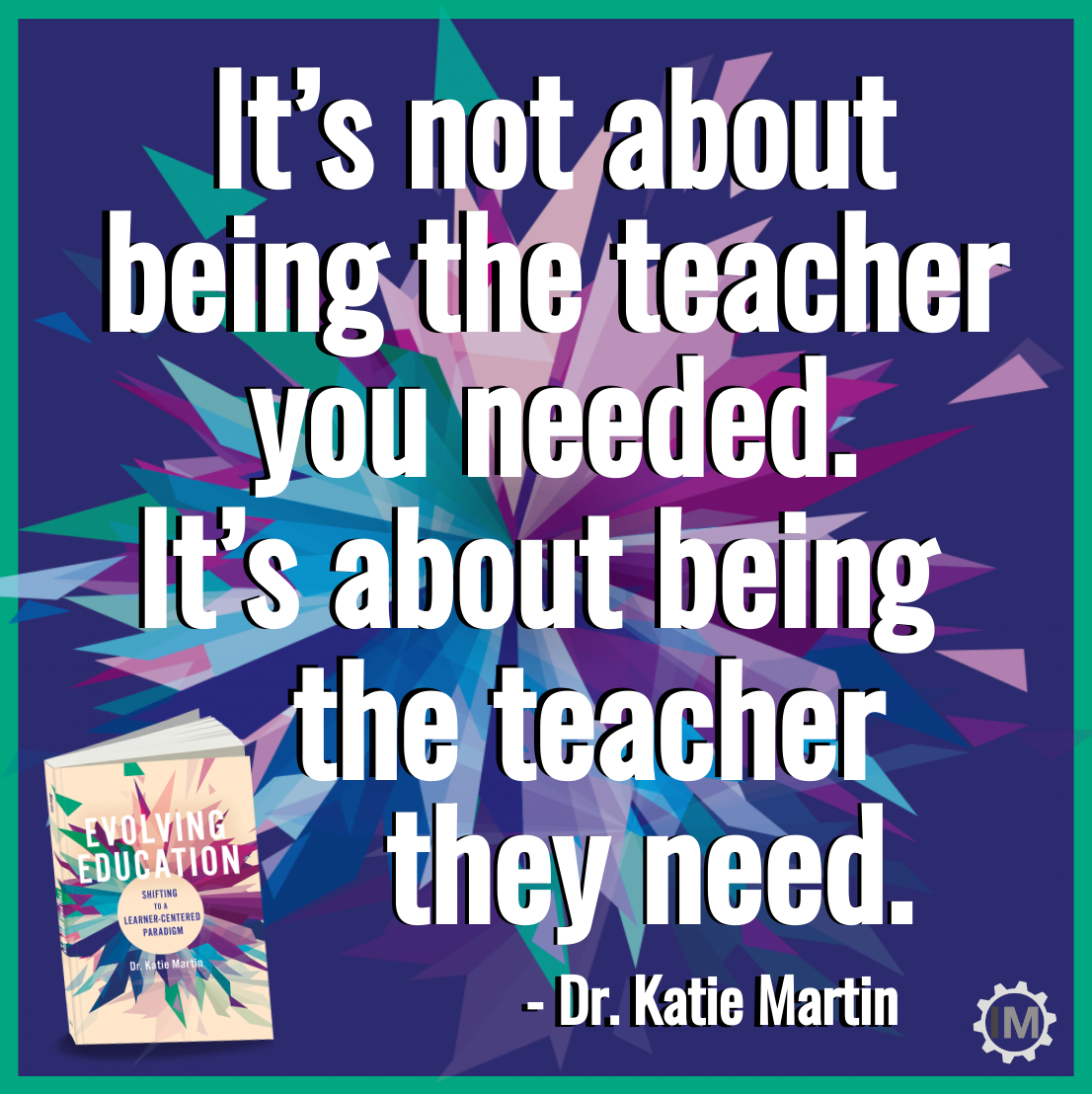It’s a common refrain to say be the teacher that you needed. On the surface level, this makes sense but in practice, I disagree. Our students and those we serve in leadership roles have different experiences, perspectives, goals, and needs. To meet them where they are, It’s not about being the teacher you needed, it’s about being the teacher that they need. This means instead of relying on our experiences and perspectives, we must practice empathy and engage with others who we are serving to understand and design for them.
Empathy is being aware of and understanding the perspectives, feelings, and experiences of others. Empathy is an important element in human-centered design and critical to creating learner-centered experiences. Too often we make assumptions about what others need or design based on our own experiences. Instead, if we want to design for the needs and opportunities of learners today, we must take time to understand the problems we are trying to solve and deeply understand the needs and experiences of those we serve.
Here are 3 ways to deepen your understanding of those you serve and how you can best meet their needs to achieve your desired goals.
Empathy Interviews
I have advocated for taking time to do empathy interviews, which is really just taking time to ask questions and listen to others’ perspectives on who they are, what they need, and gather ideas or perspectives on how to best move forward. In this article, Anita Young describes how she used empathy interviews to understand what they wanted and needed from their teachers. She shares,
“In a time of confusion and craziness in all our lives, it is clear what our students want in a teacher. These responses shed some light on their past experiences with teachers and what they hope for. While they all want and need different things, the truth is those small adjustments in our interactions with our students can go a long way in creating a learner-centered classroom that inspires them to learn and be successful.”
Instead of assuming we know the best way forward or why something isn’t working, often we gain so much more from empathizing with others.
Shadow a Student
I LOVE the shadow a student experiences (you can also shadow a teacher or principal). It is a powerful way to see the school day and classroom experience from a new perspective. The Stanford d.School has created a great protocol and toolkit for those to shadow students and empathizes with them to understand the impact of their policies, procedures, and what’s working well as well as opportunities to improve.
Starting in US History #shadowastudent @mo2000_ HS starts way too early! @mineolahs pic.twitter.com/IrTG35I37c
— Michael Nagler (@NaglersNotions) February 16, 2017
Kristin Watkins, Director of Personalized Learning in Dallas ISD shared that her team shadows students every year and is constantly refining practices and tools as a result. They have created amazing resources and support for their schools. Check out the PL Toolbox Here. If you haven’t done this, I would strongly suggest that you try it out. I would love to know what you learn.
Empathy Map
An empathy map like the one pictured below from XPLANE, “helps teams develop deep, shared understanding and empathy for other people. People use it to help them improve customer (or learner) experience, to navigate organizational politics, to design better work environments, and a host of other things.” When you intentionally go through the process you can deepen your understanding of others and how you might approach the problem you are facing.
By empathizing with students and others that you serve to understand what they are experiencing, identify what they are saying, what they are thinking, what they are doing (or not), and what they are feeling. This exercise will allow you to better consider what students are dealing with and their circumstances so that they could think about and design a better system that would support them as an individual, not how to fit each one of these students into a pre-existing system.
Small Steps Lead to Big Changes
Educators have come up with mentoring programs, varied schedules, leadership opportunities, personal schedules, and redesigned their class schedules and use of time to name just a few ideas that come out of designing for learners and learning rather than designing for school. The “right” answers will vary based on the context and the learners. But I have no doubt that caring and talented educators can create new and better opportunities to meet the needs of those in their schools and classrooms by reframing the challenges and considering multiple perspectives.
Evolving Education
It’s time to create a new normal.
It’s time to leave behind practices that don’t best serve all learners and educators, and to prioritize what matters most: relationships, connection, purpose, flexibility, agency, and authentic learning. Education must evolve. Looking to learners will help us see what’s working, what’s challenging, and, ultimately, what’s possible. To ensure that all of those learners thrive, we’ll need to use insight from our own experiences, research from the field, and new tools and approaches to adapt our practices.



I really love the idea of shadowing a student. Sometimes we forget the day-to-day mundaneness of going from class to class for 8 hours. Different teachers, different expectations, different content. It can be tough! Shadowing a student just might help educators be more reflective of their own practices and how to better meet the needs of students.